Greg Cosell's Film Review: Falcons figured out how to beat Broncos' great D
Atlanta Falcons offensive coordinator Kyle Shanahan had a tough task last week.
The Denver Broncos’ defense has shut down many creative offenses. Over the past two seasons they’ve made quarterbacks like Cam Newton, Tom Brady, Andrew Luck and Andy Dalton uncomfortable and ineffective. Shanahan had to figure out a solution.
[Play our $175K Baller | Free Yahoo Cup entry | Tips for your Daily lineup]
And what we saw was a great example of a team pulling off an upset in large part because of a fine game plan.
From the start we saw how Shanahan planned to attack the Broncos’ defense, and it can be broken down into four key parts:
1. Use base personnel, forcing the Broncos to be in a base defense. The Broncos are deep at defensive back and more effective in a dime package (their sub-package is almost always dime with six defensive backs; they have played just four snaps of nickel through five games). The Falcons ran 62 plays, and 49 were in some form of base personnel.
2. Use misdirection elements in the run game. The Broncos are a fast-flow 3-4 defense, and using elements like counter runs allowed the Falcons to take advantage of that.
3. Use running backs in the passing game. The Falcons have two backs, Tevin Coleman and Devonta Freeman, who are good receivers out of the backfield. The Falcons could use that to find advantageous matchups, which led to …
4. Forcing the Broncos linebackers to play in space.
The Falcons did a masterful job dictating personnel and matchups the whole game. Shanahan knew exactly how he needed to attack a tough defense.
It’s one thing to draw it up during the week, it’s another to execute the plays you believe should beat a defense. Let’s take a look at some plays, and how the Falcons not only got the matchups they wanted but also how they made them work.
The Falcons’ first drive was nine plays, and all but two were in base personnel. Both times they weren’t in base personnel came on third down. On first-and-10 in 21 personnel (two backs, one tight end) fullback Patrick DiMarco split outside the numbers, and Coleman shifted to the slot to make it a trips set. In a “2 man” defense, the Broncos bumped linebacker Todd Davis out on Coleman. Tight end Austin Hooper released vertically and Coleman worked underneath him — a natural rub element. Davis had to work over the top of linebacker Brandon Marshall and could not get to Coleman, who had room to run after the catch. This is a great design against man coverage. It gained 48 yards.
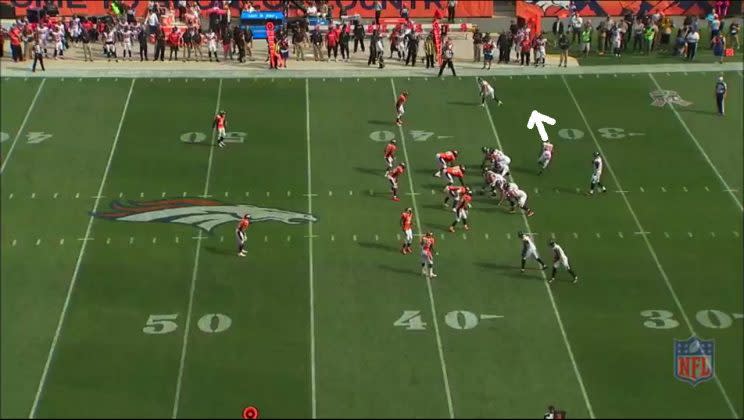
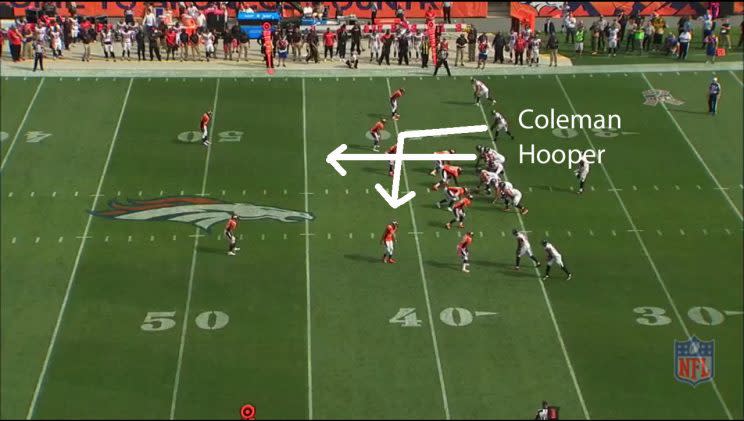
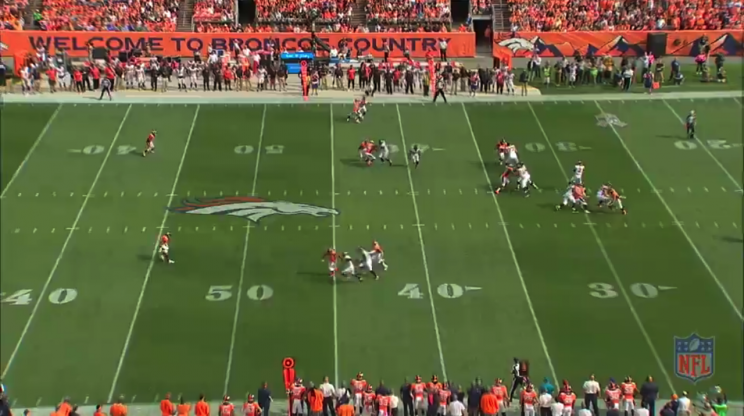

Also early in the game, we got a sense of what the Falcons wanted to do in the run game. Here’s a good example. Again in 21 personnel, the Falcons ran counter strong with the left guard and left tackle pulling. Freeman cut back inside the flow and pursuit. That’s what the Falcons wanted against this aggressive and fast Broncos defense.
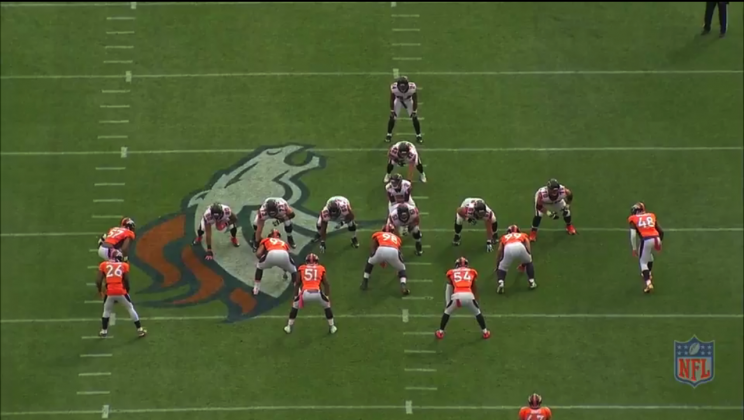
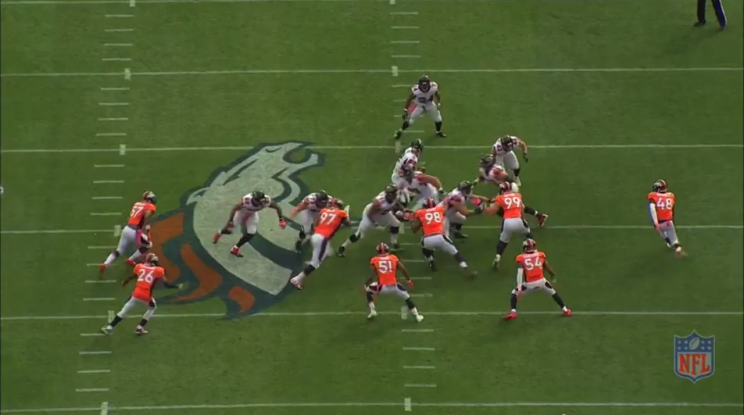
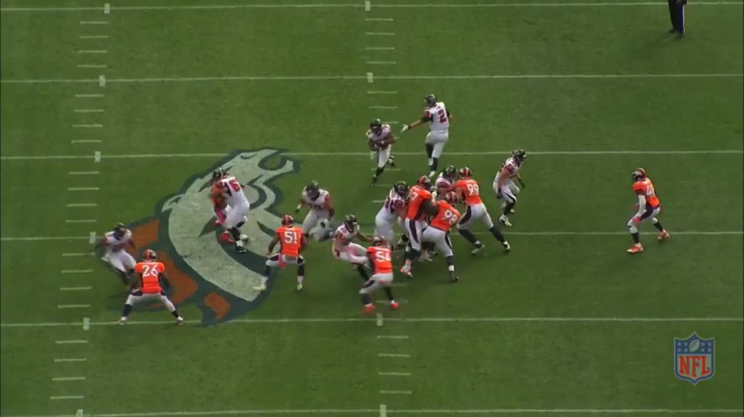
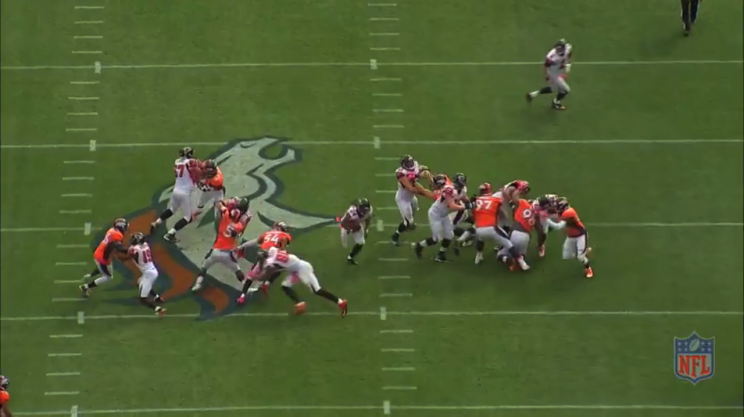
The key to the Falcons’ game plan was getting to the matchup they wanted most: their backs against the Broncos linebackers in the passing game. They often did it by detaching backs, usually Coleman, from the formation. He was clearly a matchup piece in the passing game.
It worked well on another long Coleman catch in the third quarter. From 21 personnel, Coleman shifted to the slot inside of receivers Mohamed Sanu and Julio Jones. This time Marshall was matched on Coleman in “2 man” (man coverage with two deep safeties) and the route concept was two verticals by Coleman and Sanu. Coleman ran by Marshall and scored a 31-yard touchdown. The Falcons dictated that mismatch with personnel and formation.
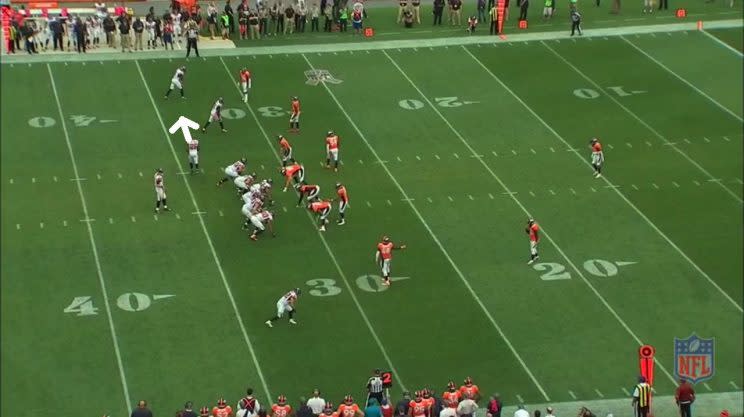
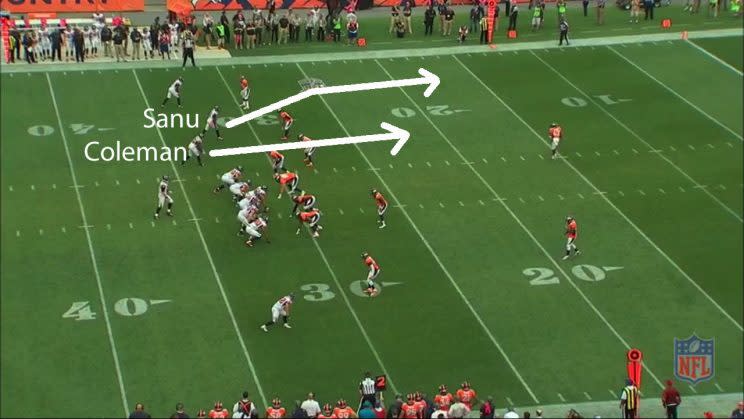
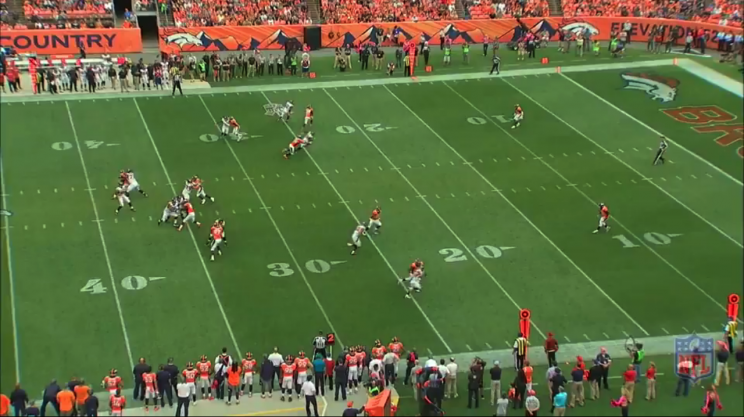
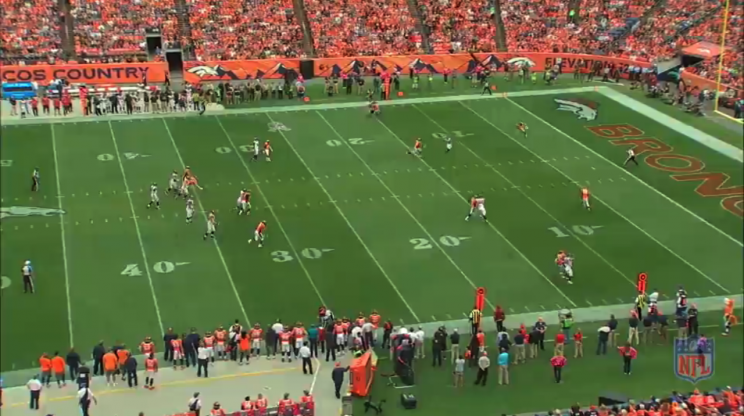
In the fourth quarter, the Falcons used another shift with Coleman to dictate the matchup they wanted. Coleman shifted to the slot inside of DiMarco, the Broncos had a “man free” blitz. Davis was matched on Coleman, who ran a slot fade route. Ryan made a big-time throw with the pocket collapsing for a 49-yard gain.
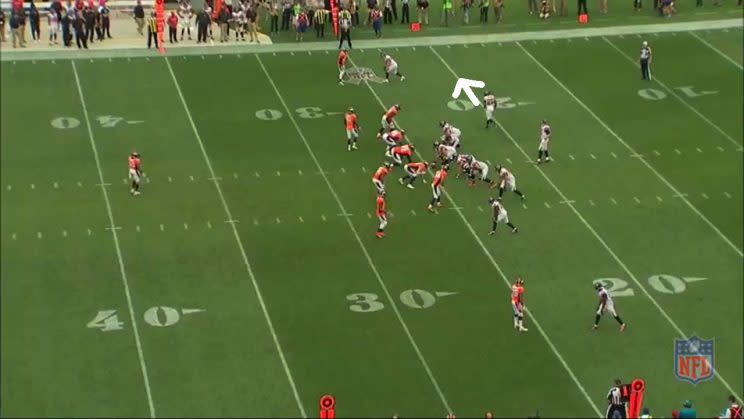
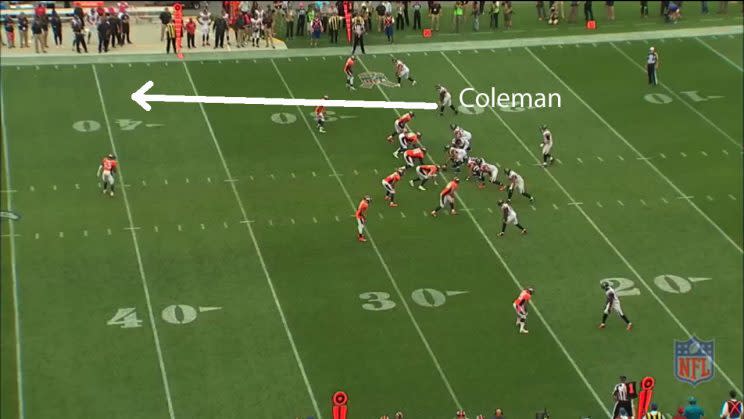
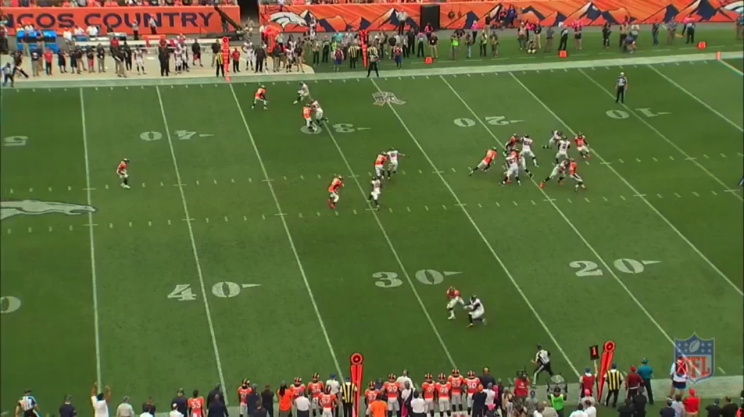
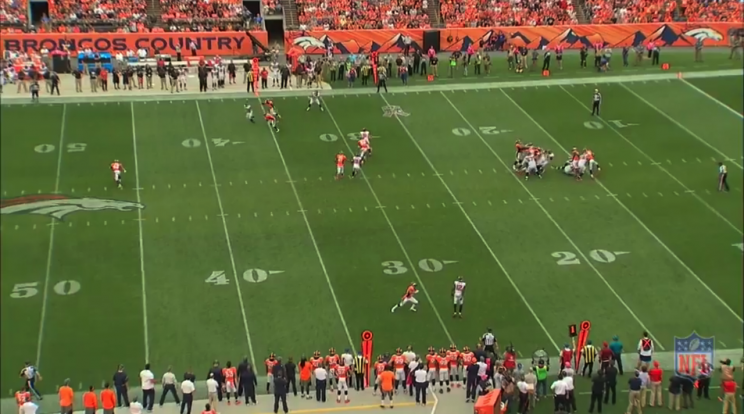
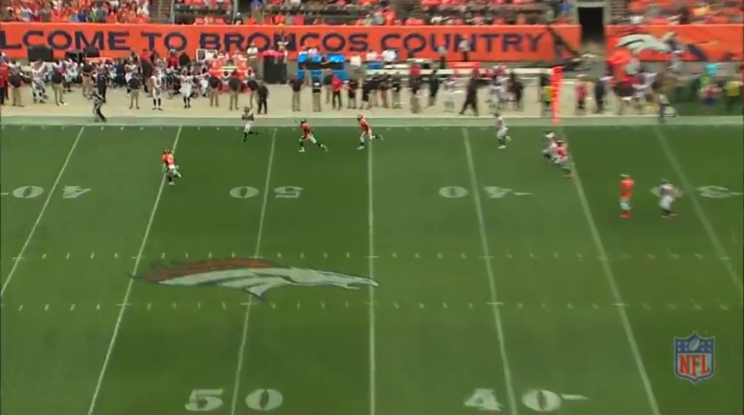
All three of Coleman’s big catches came out of 21 personnel with DiMarco split outside the numbers and Coleman shifting to the slot. All came against the Broncos’ base 3-4 personnel and man coverage.
We saw some important things in this game that we’ll need to keep an eye on. The Falcons showed a few ways to take advantage of a Broncos defense that hadn’t shown many cracks. We’ll see if more teams try to attack Denver with base personnel, trying to isolate their linebackers, and how the Broncos adjust.
Not many teams have the personnel versatility the Falcons do, however. We saw on Sunday how they can create very difficult matchup problems for opponents.
And last week the Falcons also had a smart and effective game plan. Days like last Sunday are why NFL coaches put in so many hours of preparation during the week.
– – – – – – –
NFL analyst and NFL Films senior producer Greg Cosell watches as much NFL game film as anyone. Throughout the season, Cosell will join Shutdown Corner to share his observations on the teams, schemes and personnel from around the league.


